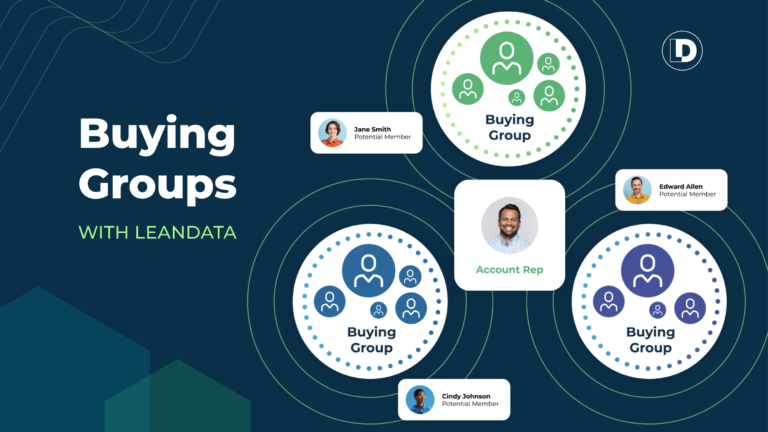When was the last time your team evaluated buyer CSAT (customer satisfaction)?
B2B revenue teams are absolutely obsessed with conversion metrics. Over time, various conversion stats have become many of the key performance indicators (KPIs) on which performance — both group and individual — is judged.
Conversion metrics exist for almost every tactical deployment from both marketing and sales functions. Simply defined, a conversion in marketing is when a visitor to one of your digital properties, for example your website or a landing page, completes a desired goal. In sales, conversion typically refers to the rate new leads become customers.
However, there are conversion metrics up and down the sales and marketing funnel. Email opens? Yeah, that’s a type of conversion, as is click-through rate (CTR). Clicks on paid media ads? Yes, that’s another, as well as the conversion on the referred page the ad directed the guest. A lead or an account moving from one stage to another in the selling process? Bingo, another conversion!
Conversion rates are indispensable when evaluating revenue team effectiveness and efficiency. But, do B2B organizations have it all wrong? They’re measuring what’s important to them. But, are they measuring what’s important to their buyers?
Your Selling Process vs. Your Customers’ Buying Journeys
Over time, your selling processes and your customers’ buying journeys have taken divergent paths. They no longer mirror one another, and that’s simply because your customers have become empowered to control their own buying journeys.
Ten years ago, sellers dictated the buying journey. Their established processes made it easier for customers to navigate through the diverse world of alternatives and potential solutions. B2B sellers built their revenue tech stacks and related content to support very similar selling and buying processes.
But, while B2B sellers have settled into the status quo, buyers have evolved their buying journeys greatly. Over the past decade, customers’ buying journeys trended more digital and more self-directed. The pandemic then radically accelerated that budding transformation.
It should be no surprise to you that the B2B buying journey is decidedly digital. And, stating that it’s “digital-first” is probably a significant understatement. It’s getting darn close to digital-only.
Repeated studies show that buyers are deep into the consideration phase of their buying journeys before directly engaging a solution provider’s representative. Gartner goes so far as to state that 83 percent of the buying journey is conducted without any direct customer engagement with a representative.
Today, customers increasingly control their buying journeys, and they bristle against rigid, impersonal, friction-filled selling processes found in the marketplace. B2B buyers have alternatives, and if they begin to feel pain in their buying journeys, they’ll abandon one and adopt another.
Measure What You Want to Achieve
Revenue teams are ultimately measured on … revenue. But, the sub-goals established that lead to revenue are where KPIs fit in and where opportunities exist to push and pull upon managerial levers to achieve optimal results.
Often, those sub-goals revolve around conversion metrics. The better the conversion, all things considered equal, the better the result.
Therefore, the maniacal obsession on conversion metrics. But, is conversion the best metric to evaluate?
Conversion metrics measure the effectiveness of different stages along the selling process. But, what about the buyer journey? Increasingly, those are two different things entirely.
There’s a disconnect between measuring what’s most important to the seller and what’s most important to the buyer.
Mapping Revenue Team KPIs to the Buyer Journey
Do you know your revenue team’s customer satisfaction (CSAT) rating along the buying journey? Chief revenue and marketing officers typically don’t.
Revenue teams tend not to have CSAT scores for their customers’ buying journeys. Success across the buyer journey is inferred by measuring conversion across the selling process.
But, again, we’re learning buyer journeys are often quite different from selling processes.
In lieu of CSAT metrics, a revenue team uses conversion rates as somewhat of a proxy for satisfaction scores. However, what does conversion tell them?
Do you know your conversion rates? You probably do, and when asked what conversion is, your answer is often, “it depends.”
Conversion rates vary at different steps of the selling process and on what call to action is being measured. A form fill might convert at three percent, a landing page at 10 percent, and an email at 15 percent. Maybe the highest converting action is a demo, many of which convert at 50 percent.
Are those conversion metrics good, bad or indifferent? For conversion rates, it’s difficult to say. But, for a CSAT proxy, try an experiment. Walk over to your company’s customer success team and ask if three, 10, 15 or even 50 percent would be a good CSAT score.
Align Processes Around a Customer-Centric Buying Journey
The trend is apparent: It won’t be long before customers are in complete control of the buying journey. When that happens, they’ll likely never relinquish control.
B2B sellers can get on top of this transition by creating processes and supporting revenue tech stack infrastructure around customers and their buying journeys.
As customers advance through their buyer journeys, they leave data, buyer signals, along the way. Those buyer signals represent the first step in the modern B2B revenue orchestration.
Tech stacks need to be built around the buyer journey, and do so so, they have to excel at the following:
- Collect, analyze and manage buyer signals
- Automatically surface important signals from high value, high priority and high intent leads, accounts and opportunities
- Assign the correct people and revenue team plays to surfaced signals
When done properly, revenue orchestration empowers and enables a revenue team to meet a prospective customer at the next step in their buyer journey. The revenue team isn’t playing catch up. It’s anticipating where the customer will be, when, and it’s waiting there for the customer with all content and data necessary for the buyer to continue on with their journey.
The Winds of Change are Blowing
B2B’s next digital transformation is to map processes to customers’ buying journeys, and in doing so, it will require a transformation of the revenue tech stack. Seamless integrations will become the hallmarks of connected tech stacks, and they’ll serve customers first, then vendors.
When revenue team processes and supportive tech stack infrastructure are centered around the buyer journey, the customer wins. And, when your customers win, your business wins. Each time, every time.













